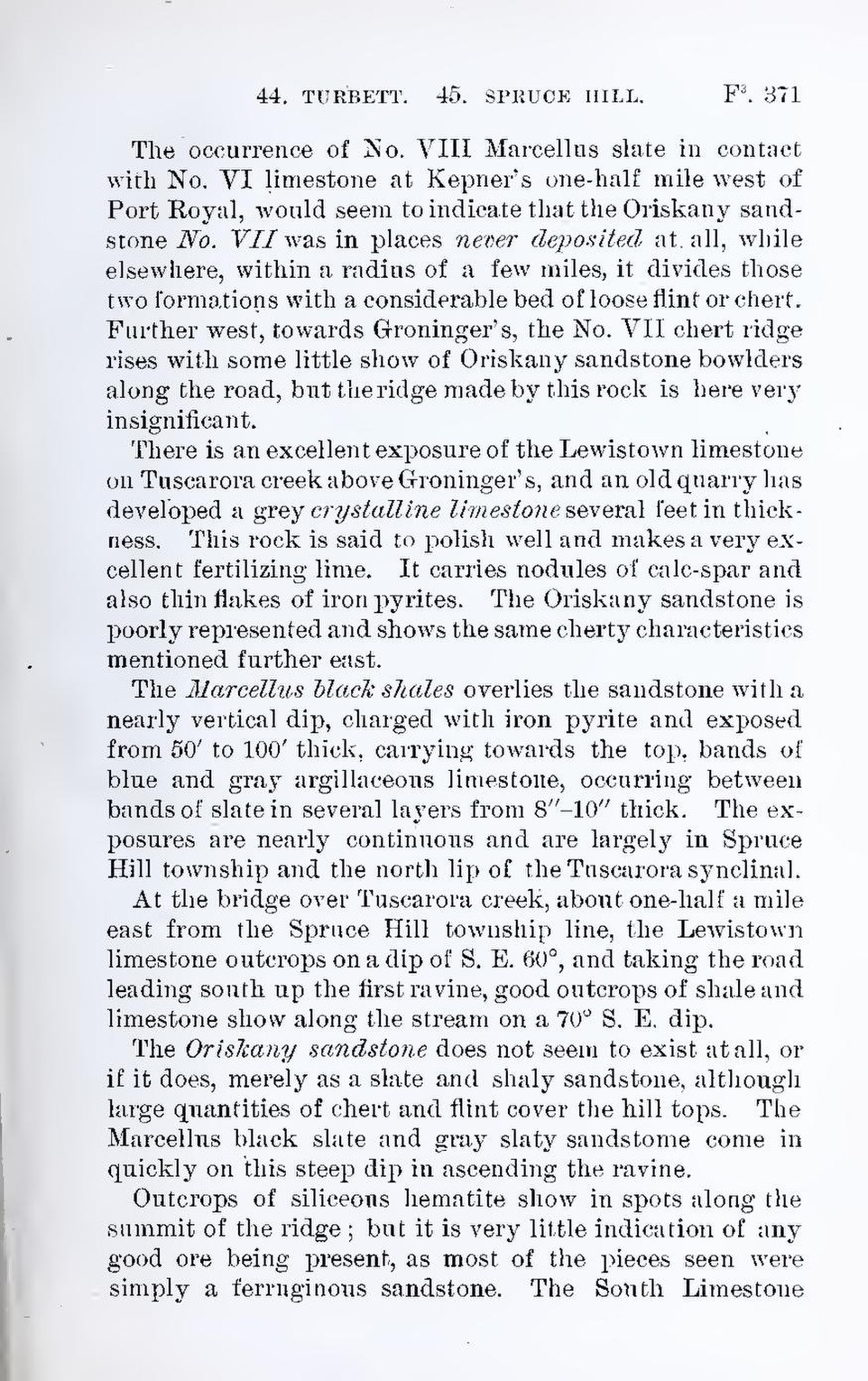The occurrence of No. VIII Marcellus slate in contact with No. VI limestone at Kepner’s one-half mile west of Port Royal, would seem to indicate that the Oriskany sandstone No. VII was in places never deposited at all, while elsewhere, within a radius of a few miles, it divides those two formations with a considerable bed of loose flint or chert. Further west, towards Groninger’s, the No. VII chert ridge rises with some little show of Oriskany sandstone bowlders along the road, but the ridge made by this rock is here very insignificant.
There is an excellent exposure of the Lewistown limestone on Tuscarora creek above Groninger’s, and an old quarry has developed a grey crystalline limestone several feet in thickness. This rock is said to polish well and makes a very excellent fertilizing lime. It carries nodules of calc-spar and also thin flakes of iron pyrites. The Oriskany sandstone is poorly represented and shows the same cherty characteristics mentioned further east.
The Marcellus black shales overlies the sandstone with a nearly vertical dip, charged with iron pyrite and exposed from 50′ to 100′ thick, carrying towards the top bands of blue and gray argillaceous limestone, occurring between bands of slate in several layers from 8″–10″ thick. The exposures are nearly continuous and are largely in Spruce Hill township and the north lip of the Tuscarora synclinal.
At the bridge over Tuscarora creek, about one-half a mile east from the Spruce Hill township line, the Lewistown limestone outcrops on a dip of S. E. 60°, and taking the road leading south up the first ravine, good outcrops of shale and limestone show along the stream on a 70° S. E. dip.
The Oriskany sandstone does not seem to exist at all, or if it does, merely as a slate and shaly sandstone, although large quantities of chert and flint cover the hill tops. The Marcellus black slate and gray slaty sandstone come in quickly on this steep dip in ascending the ravine.
Outcrops of siliceous hematite show in spots along the summit of the ridge; but it is very little indication of any good ore being present, as most of the pieces seen were simply a ferruginous sandstone. The South Limestone
